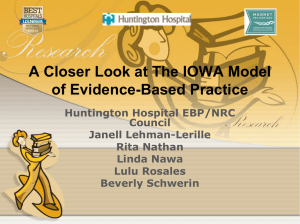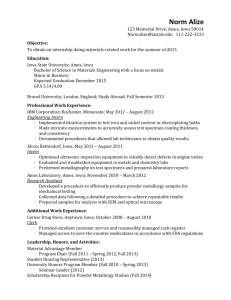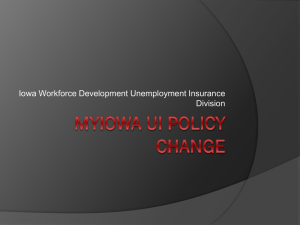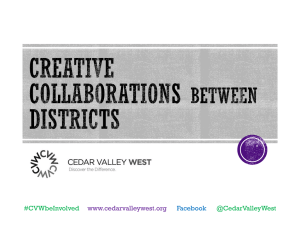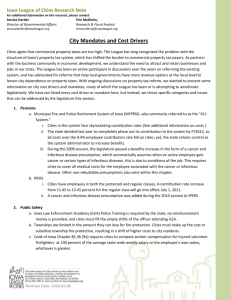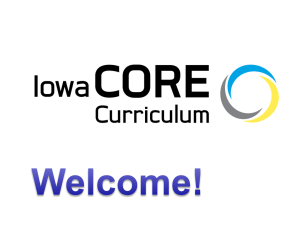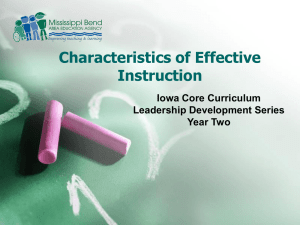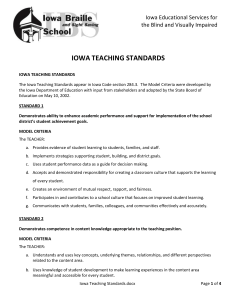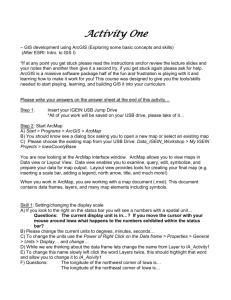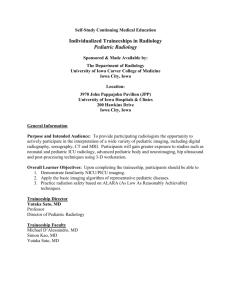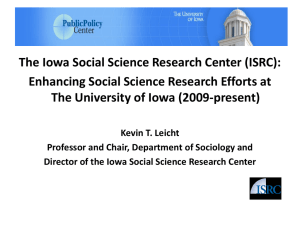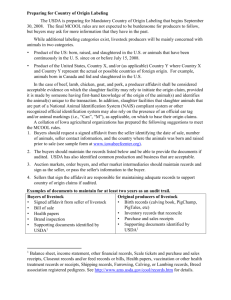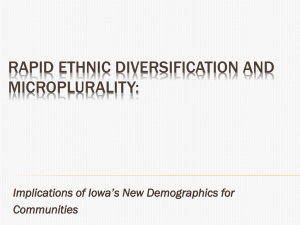the iowa model of evidence-based practice to promote quality care
advertisement
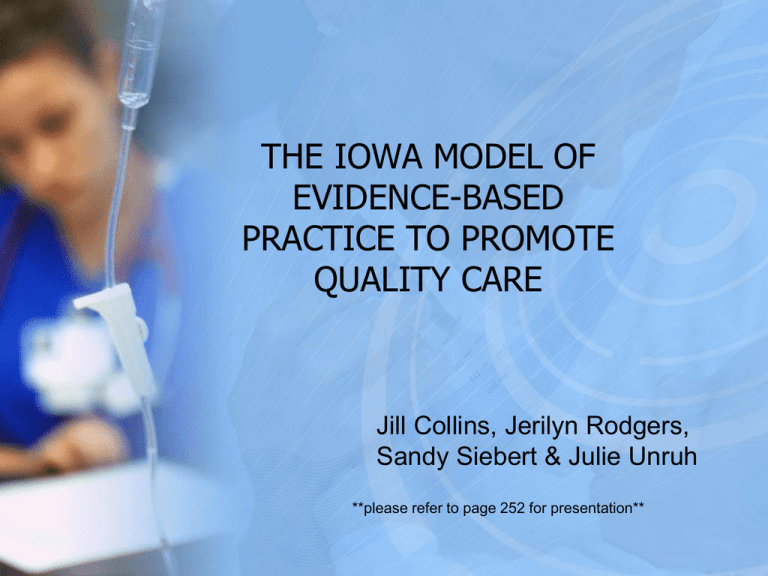
THE IOWA MODEL OF EVIDENCE-BASED PRACTICE TO PROMOTE QUALITY CARE Jill Collins, Jerilyn Rodgers, Sandy Siebert & Julie Unruh **please refer to page 252 for presentation** The Iowa Model of Evidence-Based Practice to Promote Quality Care • Provides guidance for nurses and other clinicians in making decisions about dayto-day practices that affect patient outcomes. • Based on the problem-solving steps in the scientific process and is widely recognized for its applicability and ease of use by multi-disciplinary healthcare teams. USING THE IOWA MODEL • Begins by encouraging clinicians to identify practice questions or “triggers” either through identification of a clinical problem or from new knowledge. These triggers often come from questioning current practice. • There are 2 types of triggers: Problem Focused Triggers and Knowledge Focused Triggers TRIGGERS Problem Focused • Risk Management Data • Process Improvement Data • Internal/External Benchmarking Data • Financial Data • Identification of Clinical Problem Knowledge Focused • New research or other literature • National Agencies or Organizational Standards and Guidelines • Philosophies of Care • Questions from Institutional Standards Committee USING THE IOWA MODEL • Once the trigger has been identified, one should assess the priority of the topic for the organization. If it is not an organizational priority then one should consider selecting another trigger. • If the trigger is a priority, a team should be developed to develop, implement, and evaluate the practice change. Should include stakeholders involved in the current practice. USING THE IOWA MODEL • Initially the team selects, reviews, critiques, and synthesizes available research evidence. If high-quality research evidence is not available, or sufficient for determining practice, the team may recommend using lower levels of evidence, such as case reports, expert opinion, scientific principles and theory, or conduct research to improve the evidence available for practice decisions. • If the evidence is sufficient, a practice change is piloted. The team then tries the change to determine the feasibility and effectiveness of the EBP change in clinical care. USING THE IOWA MODEL: PILOTING THE CHANGE IN PRACTICE • Select outcomes to be achieved • Collect baseline data • Design EBP guidelines • Implement EBP on pilot units • Evaluate process and outcomes • Modify the practice guideline USING THE IOWA MODEL • Following the pilot, a determination is made regarding appropriateness of adoption beyond the pilot. • Decision is made regarding adoption or modification of the practice is based upon the evaluative data from the pilot. • If practice change is not appropriate, quality or performance improvement monitoring is needed to ensure high-quality patient care. • Additional steps include watching for new knowledge, collaborating with researchers in the area, or conducting research to guide practice decisions. USING THE IOWA MODEL • If the pilot results in positive outcomes, rollout and integration of the practice are facilitated through leadership support, education, and continuous monitoring of outcomes. • Dissemination of the results is important for professional learning. THANK YOU


